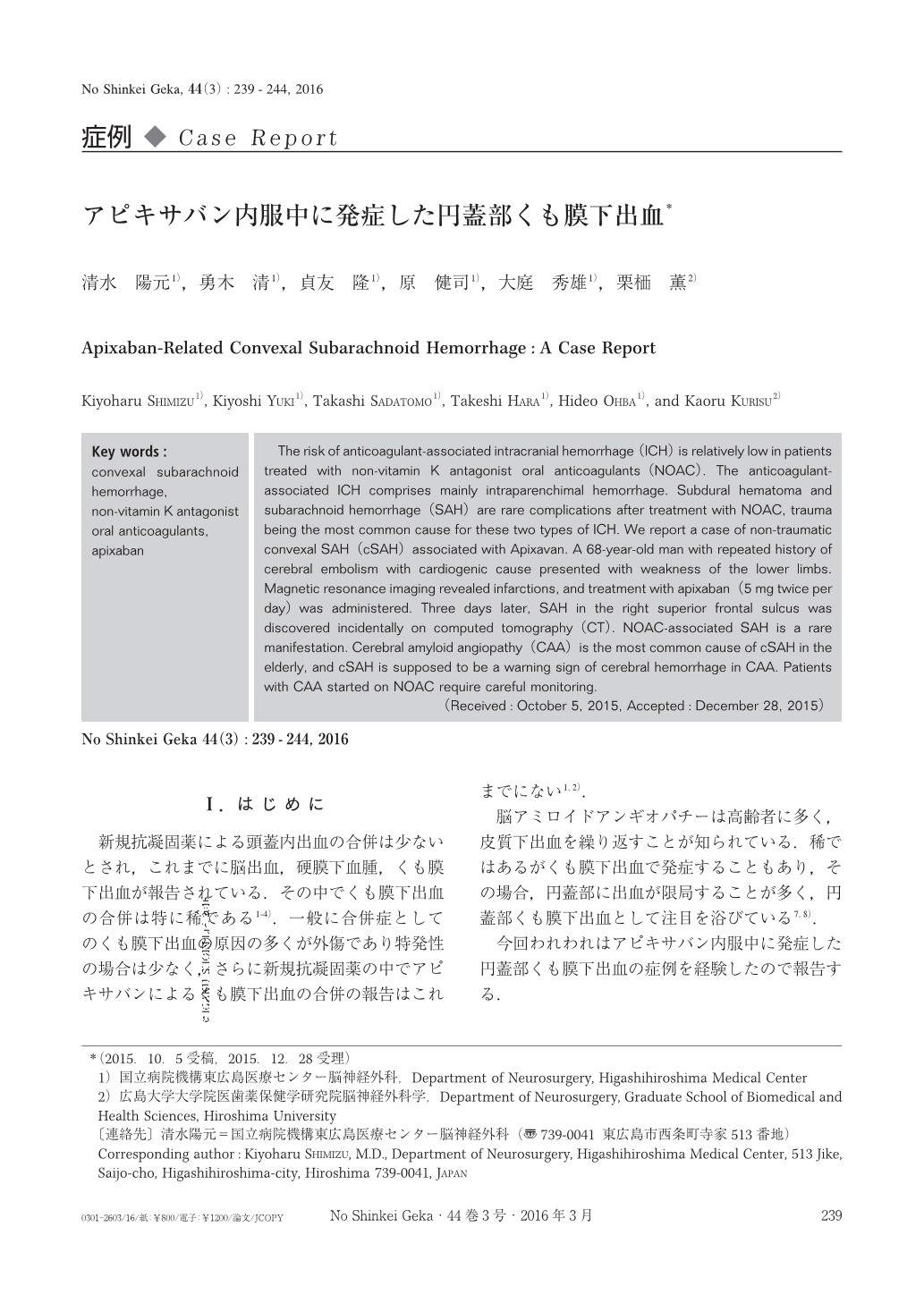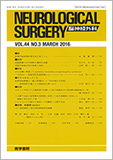Japanese
English
- 有料閲覧
- Abstract 文献概要
- 1ページ目 Look Inside
- 参考文献 Reference
Ⅰ.はじめに
新規抗凝固薬による頭蓋内出血の合併は少ないとされ,これまでに脳出血,硬膜下血腫,くも膜下出血が報告されている.その中でくも膜下出血の合併は特に稀である1-4).一般に合併症としてのくも膜下出血の原因の多くが外傷であり特発性の場合は少なく,さらに新規抗凝固薬の中でアピキサバンによるくも膜下出血の合併の報告はこれまでにない1,2).
脳アミロイドアンギオパチーは高齢者に多く,皮質下出血を繰り返すことが知られている.稀ではあるがくも膜下出血で発症することもあり,その場合,円蓋部に出血が限局することが多く,円蓋部くも膜下出血として注目を浴びている7,8).
今回われわれはアピキサバン内服中に発症した円蓋部くも膜下出血の症例を経験したので報告する.
The risk of anticoagulant-associated intracranial hemorrhage(ICH)is relatively low in patients treated with non-vitamin K antagonist oral anticoagulants(NOAC). The anticoagulant-associated ICH comprises mainly intraparenchimal hemorrhage. Subdural hematoma and subarachnoid hemorrhage(SAH)are rare complications after treatment with NOAC, trauma being the most common cause for these two types of ICH. We report a case of non-traumatic convexal SAH(cSAH)associated with Apixavan. A 68-year-old man with repeated history of cerebral embolism with cardiogenic cause presented with weakness of the lower limbs. Magnetic resonance imaging revealed infarctions, and treatment with apixaban(5 mg twice per day)was administered. Three days later, SAH in the right superior frontal sulcus was discovered incidentally on computed tomography(CT). NOAC-associated SAH is a rare manifestation. Cerebral amyloid angiopathy(CAA)is the most common cause of cSAH in the elderly, and cSAH is supposed to be a warning sign of cerebral hemorrhage in CAA. Patients with CAA started on NOAC require careful monitoring.

Copyright © 2016, Igaku-Shoin Ltd. All rights reserved.


